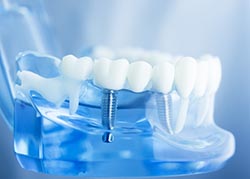
Why Do Dental Implants Work? (Osseointegration)
Looking to get a better understanding of what are dental implants? Watch this video to learn exactly how and why do dental implants (Osseointegration) work and visit read more of our blog for more dental implant tips. Dr. Parsa Zadeh explains the dental implants procedure and exactly why they work. Dr. Parsa Zadeh answers a series of important dental implant questions like:
Why do Dental Implants Work?
What did Dr. Branemark Discover with Dental Implantology?
What does Osseointegration Mean?
In this video, you will find discussion regarding why the human body does not see titanium as a threat and will not cause any reaction as it is biocompatible. The tendency of the human body is to be as efficient in recovery as possible and because of this it will typically not reject a dental implant with titanium. The body reacts to a titanium implant by filling up the remainder of the hole that was made during surgery. When an implant dentist drills a hole and places the implant, the body does not see the implant and will attempt to close the hole. Osseointegration occurs when bone cells grow into the smallest crevices of the implant surface. It is the job of a implant dentist to simulate how the human body adapts when attempting to close the hole. With a well informed implant dentist who has had proper dental implant education and the proper surgical equipment and system, there is virtually no risk for dental implant problems.
If you are looking to learn more about dental implants, please subscribe to our channel and visit http://implantedu.org for more information.
WHY DO DENTAL IMPLANTS WORK TRANSCRIPT
Why do dental implants work?
Why do the dental implants, why dental implants?
What happened to Dr. What did
Dr. Branemark discover back 70 years
ago, 60 years ago, and dental implantology
became you know the way it is today?
Titanium is biocompatible and
integrates with the bone. That’s right.
So what does integration mean? Anchor. How?
By regrowth of the bone, you can
stimulate the bone growth right around
and hugging so to speak.
Yeah, it doesn’t stimulate bone growth.
Basically, the body does not see titanium
in this form, so you can call it
biocompatible because it’s not causing
any reaction in the body or you can call
it invisible to the body. So body, when
you place the titanium in the bone the
bone cells do not see the metal there, so
they keep growing as if you put like
stainless steel it will be a foreign body
reaction there’s going to be
accumulation of all the inflammatory
cells and body tries to reject it.
Whereas, when you place a titanium in the
bone, there is no, there is no reaction
and body does not see it. So the tendency
of the body and bone is to fill up holes.
I mean if you make a drill a hole in the
bone here and let it go what is the
normal reaction of the body? To fill the
bone, right? Body doesn’t want a hole in
middle of the bone so it fills it. So
when you drill a hole and put a implant
in there. Body does not see the implant,
so what does it try to do? Try to fill
that bone? Fill that hole, so as it’s
trying to fill the hole, mechanically
it’s going to come across the titanium
structure, it doesn’t see it, keeps going
and going until mechanically it cannot
go. So that’s the integral, that’s
osseointegration when the bone cells grow
into the smallest crevices of the
implant surface that is called
integration.
So the whole thing happens because body
does not see it and body wants to fill
the hole, that’s why it’s important. Why
is it important to notice because when
we place our implant and where we place
our implant, we want to always simulate
the condition that body wants to fill
that hole. Body wants to take care of it.
If for instance, body does not want to
grow a bone like this over the side of
the mandible, obviously if you put the
implant next to the mandible it’s not
going to integrate because body doesn’t
want to grow bone there.
See it’s not the
implant that’s causing the bone to grow,
the implant does not stimulate bone
growth. Implant just is there where the
body wants to build the bone and because
physically, it’s in the way then
therefore the bone cells get into the
smaller crevices and fix this. Now if you
put the implant somewhere that body has
no intention or no desire to grow bone
there it won’t integrate.

